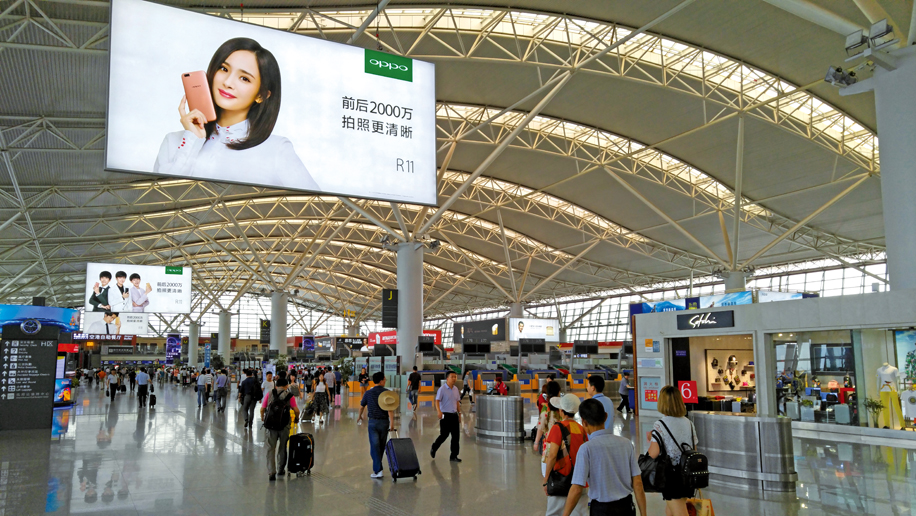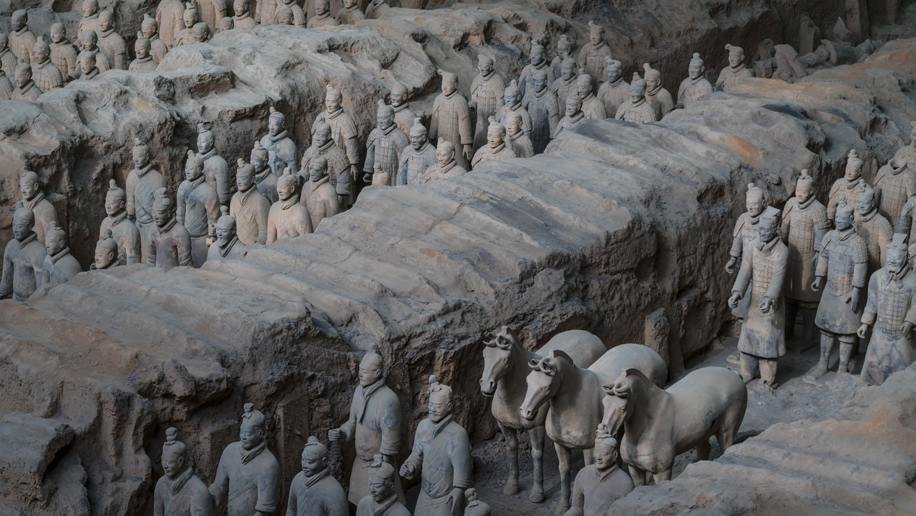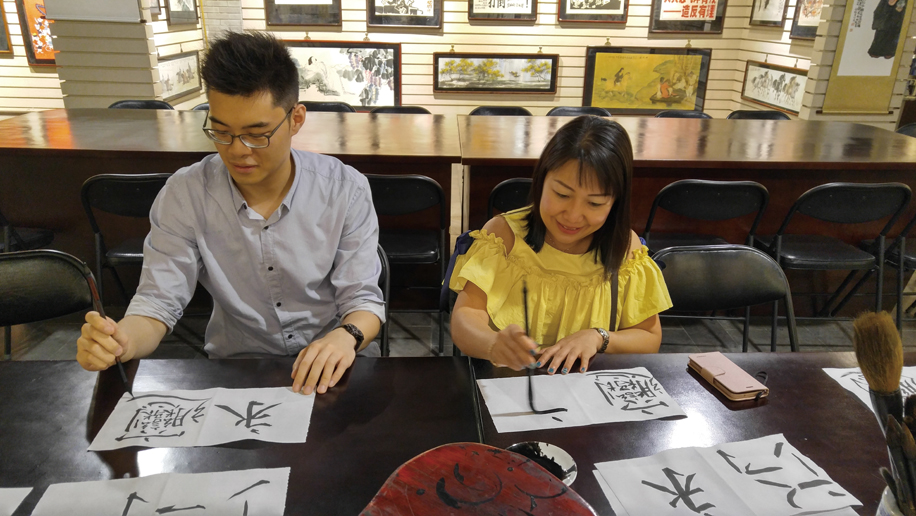
Normally I hate taking taxis in China. The rides are plagued with congestion and tend to leave you white-knuckled. But driving between meetings in Xian, I was completely distracted by the views: ornate pagodas and temples stand on virtually every street corner, the roads are lined with statues of ancient poets and officials, and old bell towers and city gates surround the outskirts. I actually began to appreciate the traffic jams for the chance to soak up such an incredible display of history.
Xian is the capital of Shaanxi province in northwest China and one of the oldest, most important cities in Chinese history. With the Qinling Mountains to the south and the Weihe River to the north, it enjoyed a natural geographic advantage in defending itself from invaders, and became the first ancient capital of China (formerly called Chang’an), a legacy that lasted for 1,200 years and spanned 13 dynasties.
Eventually, power shifted to a “new” ancient capital (Luoyang) and the city slowly faded into obscurity. However, in 1974 a freak discovery of the now famous Terracotta Warriors put Xian firmly back in the spotlight. With more than a millennium of rich history to celebrate, tourism has become big business. According to the Xian Municipal Bureau of Statistics, 136 million tourists visited the city in 2015, generating RMB100 billion (US$14.8 billion) for the economy.
But while Xian’s unique historical attractions have fuelled a booming tourism industry, the city is wary of becoming a one-hit wonder. As Leo Liu, marketing and communication manager of the Wyndham Grand Xian South commented: “We [Xian] have a long history and more historical treasures than other Chinese cities, but once tourists have seen the terracotta warriors and museums, not many will come back for a second time as the exhibits don’t change.”
To counter this, the government has been investing heavily – not just in restoring historic artefacts to their former glory, but also by creating new, modern cultural attractions.

One fast-developing district is Qujiang. Located in the southeastern part of the city and blessed with stunning lakes, its Yichun Palace was a regular residence for the emperor. In 2007 the municipal government targeted Qujiang to become a “cultural CBD”, and over the past ten years the area has seen the construction of several new attractions, including the Great Tang All Day Mall, which includes the Xian Concert Hall, Xian Art Museum and Pacific Cineplex. The government has also spent RMB2 billion (US$295 million) on the conservation and renovation of a number of heritage sites, including the Tang Ci En Temple and Qujiang Lake.
The latest addition will be the Shaanxi Theatre, which opens on October 1. This 52,000 sqm facility will house a 2,000-seat theatre, a cinema and opera house, welcoming over 1,000 artists to perform in 120 shows rotating throughout the year. Opening night will feature the famous Puccini opera Turandot, with international plays such as Peter Brook’s Battlefield and Joseph Graves’ Revel’s World of Shakespeare on the billing for later in the year.
BUSINESS MATTERS
As well as harnessing its cultural heritage, like many of China’s rising second-tier cities, Xian has become a hub of manufacturing, particularly for pharmaceuticals, chemical products and aviation components – the Xian Aircraft Industrial Corporation supplies many parts to Boeing.
More recently, the city has developed its high-tech industry and become a centre for modern business services. The Xian Hi-tech Industries Development Zone, in the southwestern Gaoxin district, was one of the first national high-tech zones in China when it launched in 1991. The original focus promoted electronic information, advanced manufacturing and biomedicine.
Since then, the zone has begun to promote strategic emerging industries such as energy conservation and environmental protection, new-generation information technology, high-end equipment manufacturing, and new-energy markets including materials and vehicles.
So far the zone has welcomed over 1,000 foreign enterprises from the US, UK, Germany, Japan, South Korea and Singapore. An example is Ericsson, a Global 500 company, which established its global service centre here in 2012. French multinational Schneider Electric has also launched multiple projects in the zone, while Korean giant Samsung made a huge investment in 2012, starting a microchip project that has gone from strength to strength – the company plans to open another factory next year.
In part, this influx of international investment has been fostered by foreign-friendly government initiatives. “The government is offering incentives to foreign companies with up to RMB30 million (US$4.4 million) in support when they invest in Xian,” explains Ivy Huang, director of sales and marketing at Shangri-La Hotel, Xian.

CONNECTIVITY
Increasing connectivity has also helped to facilitate the arrival of international companies and travellers. Direct air travel from the US became a reality last year, when United Airlines launched a service from San Francisco to Xian operated by its new Dreamliner.
Hainan Airlines also opened up routes to and from Xian last year, with direct flights now serving Sydney and Melbourne. Tianjin Airlines has also planned a new direct service from Xian to London – although the dates have been postponed several times, raising question marks as to whether it will go ahead. Other international services include flights to Malaysia, Russia, Thailand and Japan.
Developments in rail travel have also made Xian easy to get to from other parts of China, with high-speed services to big cities such as Beijing and Shanghai. By the end of this year, a new Xian-Chengdu service is also scheduled to launch, which will reduce travel time from 12 hours to just three hours.
Travel inside the city is also getting easier. Xian’s metro system currently has three lines in operation, with a total of 15 lines expected to be up and running by 2030.
WHERE TO UNWIND
A visit to the Terracotta Warrior complex is a must. Three pits spanning 20,000 sqm hold some 7,000 life-size figures, chariots and horses, each one carved individually from the region’s red clay. This incredible undertaking was ordered in the third century BC by Qin Shi Huang, the first emperor of China, to protect him in the afterlife. The site was accidentally discovered in 1974 by a group of farmers, and is considered one of the most spectacular archaeological finds of the century. The complex is about a 45-minute drive to the northeast of the city.
Tickets cost RMB150 (US$22); open 8.30am-5.30pm; Qinling North Road, Lintong District, Xian, Shaanxi. English-speaking guided tours are available on site (RMB150/US$22 for 1.5 hours), or hotels such as Shangri-La Hotel, Xian offer tours for hotel guests that include a return car service and private tour guide.
If you’re keen to try your hand at some traditional Chinese art during your visit, pay a visit to the Tang Bo Art Museum. The museum displays a range of local arts and paintings from ancient China, including shadow plays, paper cutting and opera masks. The museum also offers workshops in calligraphy and paper cutting, with English-speaking tutors available. Tickets cost RMB150 (US$22); open 8.30am-4.30pm; 26 Gongyuan South Road.
WHERE TO EAT
Crispy pork knuckle and a tankard of Bavarian beer might not be a local flavour, but the German Hacker-Pschorr restaurant at The Fairway Place, Xian – Marriott Executive Apartments is well worth a visit. The name is synonymous with Munich’s centuries-old brewing tradition and attests to the high-quality imported beers on offer, which can be enjoyed on the spacious outdoor terrace. Open for lunch and dinner; 16 Gaoxin 4th Road, Gaoxin District; tel +86 29 6568 2399.
For more local tastes head to Muslim Street, a picturesque spot in the city centre that teems with local food stalls. It gets its name from Xian’s heritage as the starting point of the Silk Road, when many Arabic and Persian traders settled in the area. Popular local snacks include hula soup, a beef soup spiced with black pepper and capsicum, while another must-try speciality is the flavoursome liangpi noodles, made from wheat or rice and served cold.

WHERE TO STAY
The Fairway Place, Xian – Marriott Executive Apartments
Opened in September 2015, these serviced apartments are conveniently located in the centre of the Gaoxin Hi-tech Industries Development Zone. There are 158 units available, ranging from 45 sqm studios to 110 sqm three-bedrooms, plus a 110 sqm function room for business or social events. marriott.com
Shangri-La Hotel, Xian
Opened in 2007, this five-star hotel still feels fresh and modern in its design and facilities. Also located in the hi-tech development zone, it houses 395 guestrooms and offers picturesque views of the city and the hotel’s landscaped gardens. A highlight is Chi, The Spa – Shangri-La’s signature spa – which has been designed with reference to the city’s historic past. shangri-la.com/xian
Hyatt Regency Xian
This 298-room hotel opened in July last year, located in the Qujiang District near the Xian Convention Centre and Qujiang Lake. Its design is inspired by the historic Daming Palace, and thanks to local building restrictions (no building can be taller than the 64-metre Wild Goose Pagoda), the area has a pleasant low-rise feel. regency.hyatt.com
Wyndham Grand Xian South
Opened in 2014 in the Qujiang District, this large hotel offers 565 rooms and suites. It has an impressive 5,000 sqm of meeting and event space, ranging from a 90 sqm function room to the 1,500 sqm grand ballroom. wyndhamhotels.com
Regal Airport Hotel, Xian
Directly connected to Xian Xianyang International Airport’s Terminal 3 via a covered bridge, the two-year-old hotel offers 297 rooms and suites. It also houses five restaurants and bars, serving a wide range of Cantonese and international cuisines from US steak to Chinese noodles. regalhotel.com












